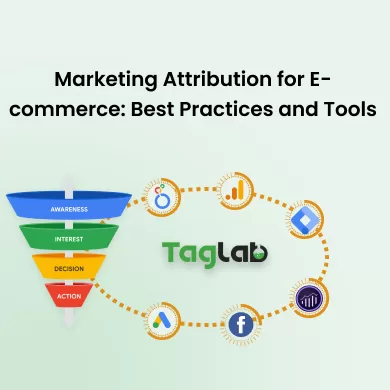Your cart is currently empty!
Return on Ad Spend (ROAS) Metric Definition
Posted by:
|
On:
|
Return on Ad Spend (ROAS) is a key performance indicator (KPI) that measures the revenue generated for every dollar spent on advertising. This metric helps businesses understand the effectiveness and profitability of their ad campaigns in driving revenue.
Detailed Explanation
What is Return on Ad Spend (ROAS)?
Return on Ad Spend (ROAS) is calculated by dividing the revenue generated from ad campaigns by the total ad spend. This metric indicates the revenue earned for each dollar spent on advertising, providing insights into the profitability and efficiency of ad campaigns.
How it Works?
ROAS provides a clear picture of how effectively ad spend is translating into revenue. A higher ROAS indicates that the ad campaign is generating more revenue for each dollar spent, suggesting effective targeting and ad relevance. Conversely, a lower ROAS suggests that the ad spend is not generating sufficient revenue, indicating potential issues with the ad campaign or targeting strategy.
Types of ROAS Metrics
- Overall ROAS: The return on ad spend for all ads in a campaign or across the entire ad account.
- Ad-Specific ROAS: The return on ad spend for individual ads.
- Channel-Specific ROAS: The return on ad spend for ads on specific platforms (e.g., Google, Facebook).
Illustrative Scenarios
Examples
- If a company spends $1,000 on an ad campaign and generates $5,000 in revenue, the ROAS is $5,000 / $1,000 = 5. This means the company earns $5 for every $1 spent on advertising.
- If a business spends $2,500 on a campaign and achieves $10,000 in revenue, the ROAS is $10,000 / $2,500 = 4. This means the company earns $4 for every $1 spent on advertising.
Segmentation
Analyzing ROAS by different segments (e.g., by ad copy, audience targeting, or ad placement) can provide deeper insights. For example, comparing ROAS across different ad copies can help identify the most profitable messaging and creatives.
Factors Influencing ROAS
- Ad Spend: The total budget allocated to the ad campaign.
- Revenue Generated: The total revenue generated from the ad campaign.
- Ad Relevance: More relevant ads tend to have higher ROAS.
- Targeting Accuracy: Precise audience targeting can lead to higher ROAS.
- Landing Page Quality: High-quality landing pages can improve conversion rates and increase ROAS.
Strategies to Improve ROAS
- Optimizing Ad Spend: Allocating budget to the most effective ads and channels.
- Enhancing Ad Relevance: Creating relevant and engaging ad copy and visuals.
- Refining Audience Targeting: Using precise targeting to reach the most relevant audience.
- Improving Landing Pages: Ensuring landing pages are relevant, fast-loading, and user-friendly.
- Testing Different Ad Variations: Running A/B tests to determine the most effective ads.
ROAS Benchmarks
ROAS benchmarks vary by industry and type of ad. For example:
- E-commerce: Typically aims for higher ROAS due to direct purchase opportunities.
- Lead Generation: ROAS can vary widely based on the value of the leads generated.
- SaaS: Often has ROAS focused on trial sign-ups or demo requests.
Comparing your ROAS against industry standards can help gauge performance and set realistic goals.
Tools for Measuring ROAS
- Google Ads: Provides detailed ROAS tracking for search and display ads.
- Facebook Ads Manager: Offers ROAS data for social media ads.
- Google Analytics: Tracks ROAS for ads driving traffic to your website.
- Third-Party Ad Platforms: Tools like AdRoll and Taboola provide ROAS metrics for their ad networks.
Common Pitfalls and Mistakes
- Ignoring Landing Page Quality: Failing to optimize landing pages can lead to lower ROAS.
- Poor Audience Targeting: Ineffective targeting can result in low engagement and lower ROAS.
- Neglecting Ad Copy and Creatives: Boring or irrelevant ad copy and visuals can harm conversion rates and lower ROAS.
- Overlooking Offers: Weak or irrelevant offers can lead to poor conversion performance and lower ROAS.
- Inconsistent Monitoring: Not regularly tracking ROAS can result in missed opportunities for optimization.
Frequently Asked Questions
What is Return on Ad Spend (ROAS)?
Return on Ad Spend (ROAS) measures the revenue generated for every dollar spent on advertising. It is calculated by dividing the revenue generated from ad campaigns by the total ad spend.
Why is ROAS important?
ROAS is important because it helps businesses understand the effectiveness and profitability of their ad campaigns in driving revenue. A higher ROAS indicates better ad performance.
How can I improve my ROAS?
Improving ROAS can be achieved by optimizing ad spend, enhancing ad relevance, refining audience targeting, improving landing pages, and testing different ad variations.
What factors influence ROAS?
Factors influencing ROAS include ad spend, revenue generated, ad relevance, targeting accuracy, and landing page quality.
What is a good benchmark for ROAS?
A good benchmark for ROAS varies by industry. E-commerce typically aims for higher ROAS, lead generation ROAS can vary widely, and SaaS often focuses on trial sign-ups or demo requests. Comparing against industry benchmarks can help set realistic goals.




